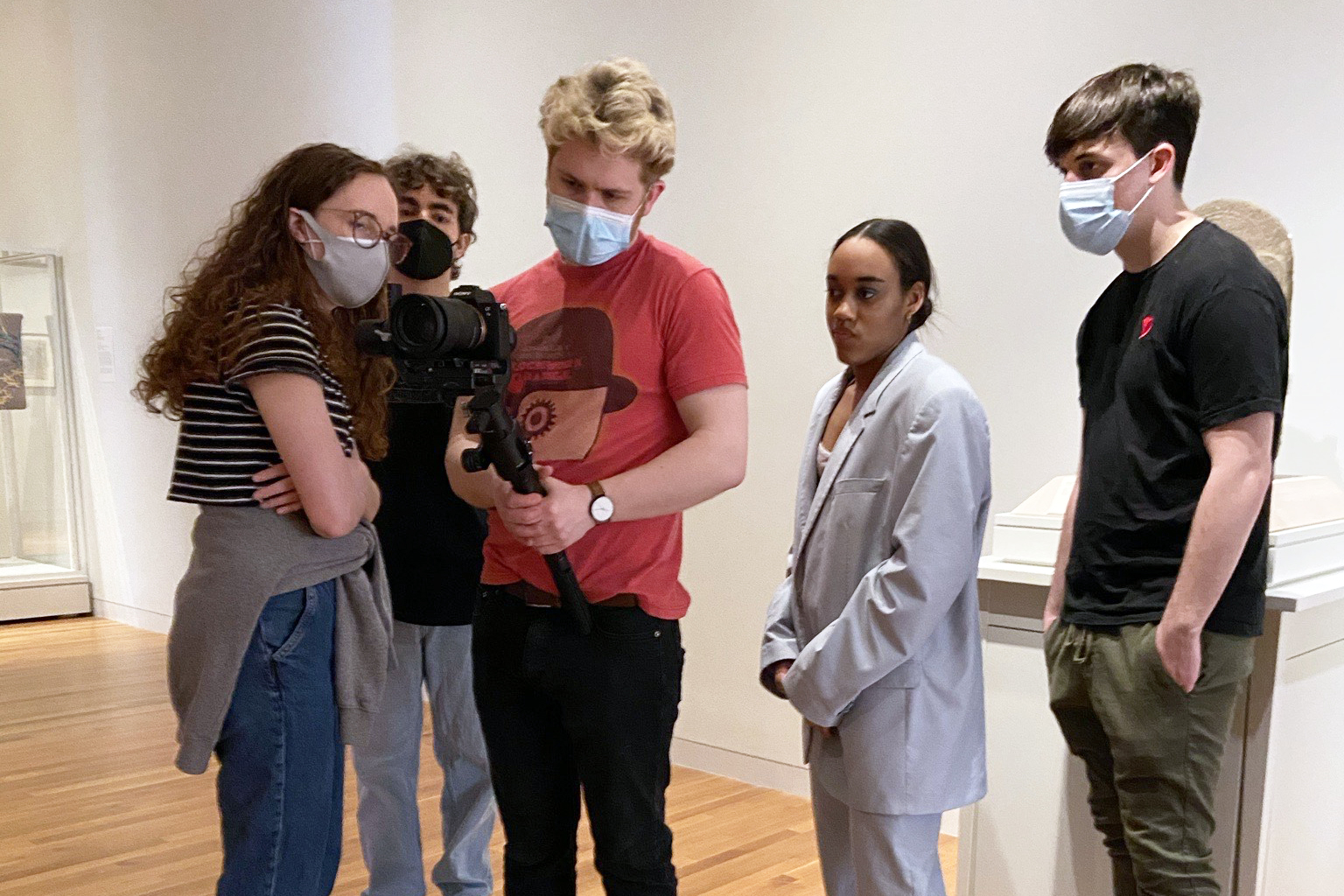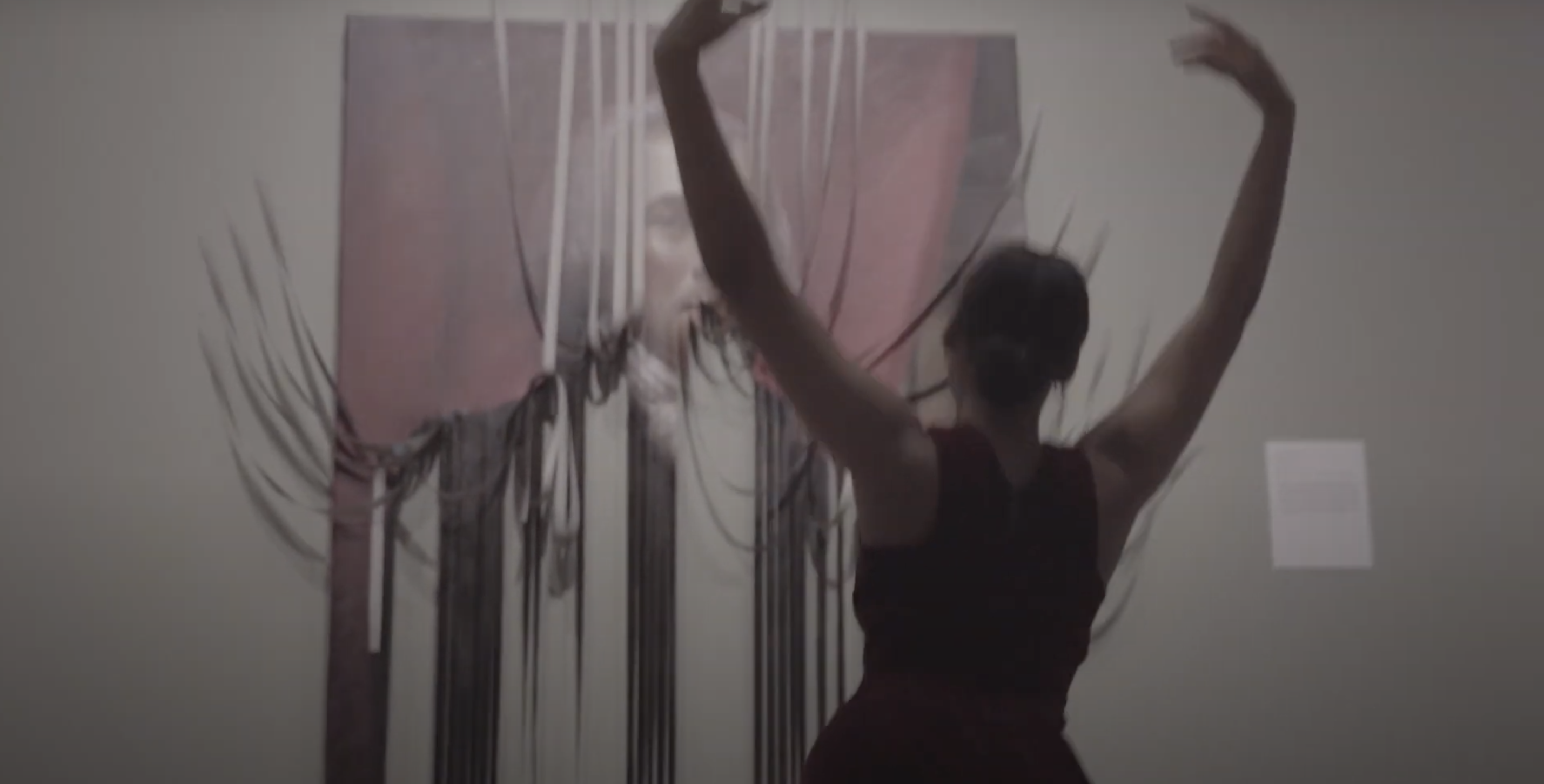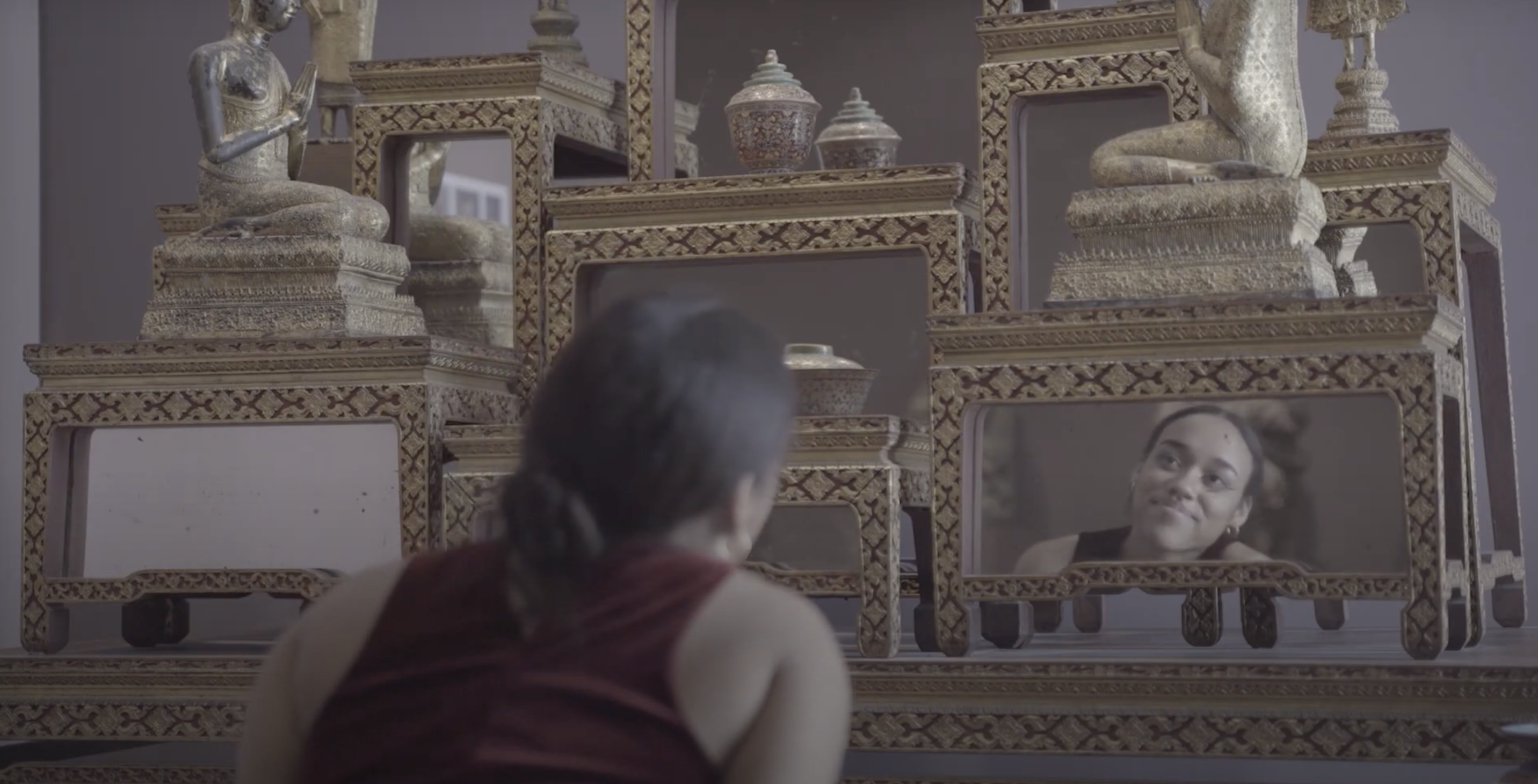"We Want Something Crazy": A Q+A With Filmic Productions

We sat down with some students from Filmic Productions to talk about their latest project, a video depicting a student dancing around UMMA. From the music to the costumes to the choreography, everything was completely student-made.
The video, titled “Claim Your Space,” encourages visitors from U-M and the greater Southeast Michigan community not only to feel a sense of belonging, but to imagine themselves engaging with the museum in new ways.
ON THE IDEA OF "CLAIM YOUR SPACE":
Charlotte Beggs, director: Yeah, the theme of “Claim Your Space” came more from UMMA’s side, but it worked really well with what we wanted to do. The video shows this character kind of coming into the museum, looking at different pieces, being inspired by different pieces, changing her outfit and how she feels about different things, and then at the end she returns to the outfit she was wearing at the beginning.
Lauren Roebuck, dancer: When I was creating movement in my dorm room, they had shown me like where I was going to dance, and the portrait of James Madison [Flay (James Madison), by Titus Kaphar] was really inspiring for me because I just kept thinking about doing, like, expansive movements in front of that piece, and make my body take up as much space as possible.

ON RECRUITING LAUREN TO DANCE:
Lauren: I’m a dance major here in SMTD. Someone from Filmic asked me to be in a music video for Sabbatical Bob. I was scared--but I said yes, because, open minds, you know, college. Then later Sam [Cantie, director of photography] DMed me about this one, and I was like Whoa, this sounds so official, why’d they pick me? I don’t know, but thanks! [laughing] So then I got on a Zoom with everyone and I also got to hear some of the music that Sam [Uribe-Botero, composer] had produced and I was like, This is about to be really cool, I’m so excited for this. We filmed for like two full days in March.
Morgan Kowaleski, producer: One really awesome thing Lauren did on set, which she’s too humble to talk about, is that a few times, we just set up the camera and asked her to improv, and she would just do it, and it was incredible. We only needed about ten seconds, but we’d just watch her and be like Gahhhh, why can’t we include more!
ON THE MUSICAL INSPIRATION:
Morgan: When we first walked into the Apse, we were imagining classical music, maybe piano. Then we told Christopher [Ankney, UMMA’s Director of Marketing and Public Relations] that and he was like, Absolutely not--we want something crazy.
Sam Uribe-Botero, audio engineer and composer: Yeah, when I heard we needed something way more modern, something that would contrast with our initial ideas, I tried to come up with a few different things. I was listening to a lot of Frank Ocean’s newest stuff, a lot of big drums, something that was like in-your-face. I came up with maybe five or six things to show, and we decided on the song that you currently have in the video now. And I actually was the one who was kind of pushing against it, because I thought it was a little bit too much, but everyone else seemed to love it, and I’m happy we went with it.
Ben Servetah, writer and assistant director: Yeah, Sam killed it! I remember when we were trying to, like--we sent him a playlist for inspiration and like none of the songs sounded similar at all. I don’t even know how he made something out of that.
ON HOW THEY PULLED OFF THAT MIRROR SHOT AT THE END:
Sam Cantie, director of photography: Eddddddd! Ed popped off on that one.
Ed Shimborske, director of photography: That was one of the most difficult shots to get. I thought it would be really cool to do something like going into the mirror and kind of showing, like, the two different sides of her. Because we already had the idea for it to be sort of a fantasy, so I thought that piece was perfect for encapsulating that. We had to get a bunch of different angles of the mirror, and then splice them all together in the editing room. That shot took probably the longest amount of time--it was really frustrating but I think it was worth it.
Morgan: We had to film an alternate ending, just in case it didn’t work.
Ben: Everyone was kind of yelling at each other about how on earth it would work. It was like, probably like ten, fifteen minutes where we were actually shooting, we were just like, kind of yelling at each other, trying to figure it out, so that was a very funny moment on set.
Sam C.: I think that was the very last shot we did for the entire project, and we were all absolutely stoked. Everyone was just vibing off of each other, and we kept upping the ante like What if we did this? And what if we did this? For me that’s a huge memory, just like madness when we were really excited to see what would happen.
Charlotte: Yeah. And thematically, like, Lauren’s a student coming into UMMA and being inspired by these new worlds. And at the end she’s kind of back in her regular life, but she’s kind of looking in the mirror to this person who she became in this dream fantasy-scape. And then she gets up and walks off camera, she’s going back out into the world with this newfound imagination and inspiration.

ON HOW YOU CAN JOIN FILMIC:
Morgan: You don’t need to be a film major! Like, Sam C. was an English major, and Sam U. is studying cognitive science. You just have to like being creative and have an interest in film.
Ben: We’ll be at FestiFall. Definitely follow our Instagram! And check out our website--you can apply there until September 15th.
Sam C.: I hope that we at Filmic can just continue to get creative and to join teams and groups that make stuff together. That’s what was so incredible about this project--just the camaraderie of working together, and like knowing how cherished and rare that opportunity is. I hope that people will take advantage of going to UMMA and being together in creative, artistic spaces. We haven’t had that in a really long time, so I hope people watch this video and are like Hell yeah, I wanna go see art with my friends!
Thanks also to Filmic members Lauren Trail (art director) and Ben Center (editor).
Interview edited and condensed for clarity by Kathryn Beaton

